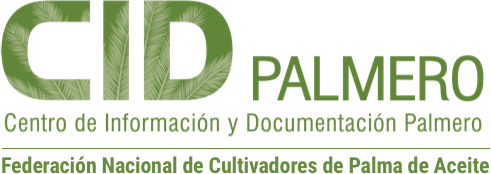Isolation and identification of bacteria associated with Elaeidobius kamerunicus and oil palm flowers.
Abstract
A study was carried out to isolate and identify Gram-negative bacteria associated with the larvae of Elaeidobius kamerunicus and male oil palma spikelets. Nine species of florala bacteria and seven species of larval bacteia were identified. They belong to four genera, namely engterobacter, Serratia, Klebsiella and Escherichia. Most of the bacteria isolated from larvae wee also found in both the soils and male spikelets. Two predominant species of entomopathogenic bacteria isolated from the weevils and spikelets were engterpbacter cloacae and Serratia marcescens. Often, the same species of bacteria isolated from the weevil's haenocoel were also found in the intestine. The frequencies of isoilation were 17%, 12% and 5% for samples collected from oil palm plantations at Banting, Labu and Serdang, respectively. A study was carried out to isolate and identify Gram-negative bacteria associated with the larvae of Elaeidobius kamerunicus and male oil palma spikelets. Nine species of florala bacteria and seven species of larval bacteia were identified. They belong to four genera, namely engterobacter, Serratia, Klebsiella and Escherichia. Most of the bacteria isolated from larvae wee also found in both the soils and male spikelets. Two predominant species of entomopathogenic bacteria isolated from the weevils and spikelets were engterpbacter cloacae and Serratia marcescens. Often, the same species of bacteria isolated from the weevil's haenocoel were also found in the intestine. The frequencies of isoilation were 17%, 12% and 5% for samples collected from oil palm plantations at Banting, Labu and Serdang, respectively.
A study was carried out to isolate and identify Gram-negative bacteria associated with the larvae of Elaeidobius kamerunicus and male oil palma spikelets. Nine species of florala bacteria and seven species of larval bacteia were identified. They belong to four genera, namely engterobacter, Serratia, Klebsiella and Escherichia. Most of the bacteria isolated from larvae wee also found in both the soils and male spikelets. Two predominant species of entomopathogenic bacteria isolated from the weevils and spikelets were engterpbacter cloacae and Serratia marcescens. Often, the same species of bacteria isolated from the weevil's haenocoel were also found in the intestine. The frequencies of isoilation were 17%, 12% and 5% for samples collected from oil palm plantations at Banting, Labu and Serdang, respectively.
Palabras clave:
Bacteria.
Bacterias entomógenas.
Elaeidobius.
Elaeis guineensis.
Flores.
Técnicas analíticas.
Palma de aceite
Bacteria.
Bacterias entomógenas.
Elaeidobius.
Elaeis guineensis.
Flores.
Técnicas analíticas.
Palma de aceite



